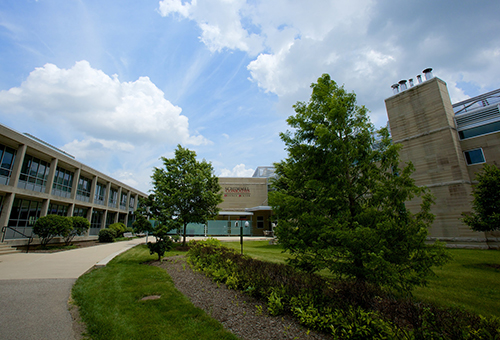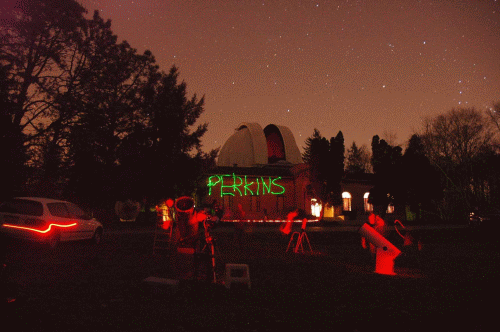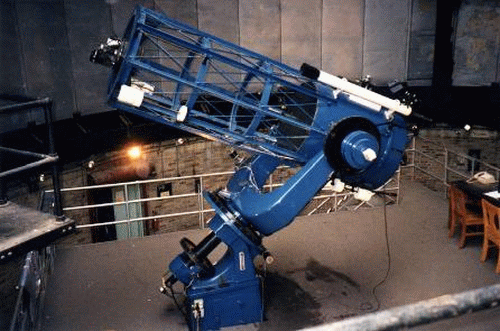The department is located in Schimmel/Conrades Science Center, seen here:

Also on campus is the Student Observatory, with its 9-1/2-inch refracting telescope. Advanced astronomical study is done at Ohio Wesleyan’s Perkins Observatory, a few miles south of campus. A night view taken during a meeting of the Columbus Astronomical Society by CAS member Brad Hoehne is shown here:

Housed inside the Perkins dome is a 32-inch reflecting telescope, seen here:

The two General Physics Laboratories are equipped with PCs running Windows and Linux that are used for experiment control, data analysis, and report creation.
Advanced students learn programming in a variety of languages and environments, including Fortran, C, LabVIEW, IDL, Python, and Mathematica in order to run experiments, conduct simulations and perform data analysis. A 15-node Beowulf computing cluster is also available for student research projects.
Other department facilities include a shop comprised of metal-working (lathe, milling machine) and wood-working (table-saw, scroll-saw, drill press) tools, a complete electronics lab, a darkroom, a Meade LX-200 and a Celestron NexStar GPS telescope, two Santa Barbara Instruments Group astronomical CCD cameras with research-grade photometric filters and a stellar spectrometer, and an Optec SP-3 astronomical photometer.



